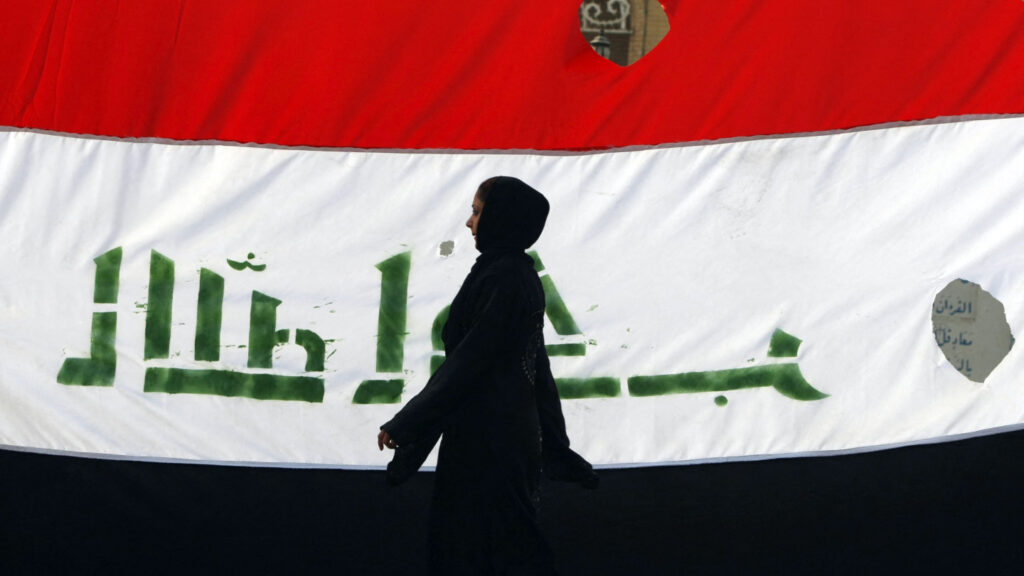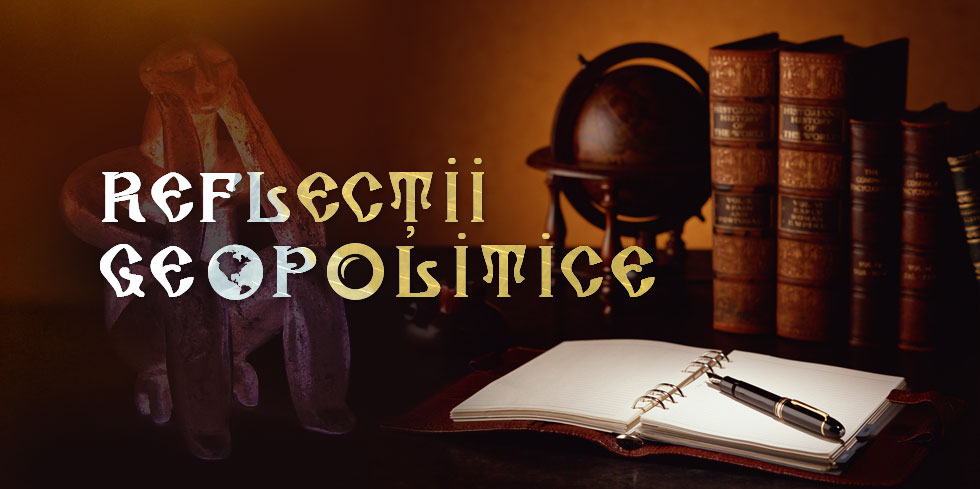
With elections approaching, Iraq’s future hinges on how it manages internal reforms amid rising US-Iran tensions that threaten its sovereignty and stability
Seven months into US President Donald Trump’s second term in the White House, Iraq finds itself at a critical juncture.
Simmering US-Iran tensions, compounded by Israel’s war in June, in which the US participated, have threatened to jolt the country back into instability.
At the heart of the debate lies the fate of the Popular Mobilisation Forces (PMF), whose next chapter could define Iraq’s trajectory.
Whether disbandment, integration, or political reinvention, each option for the Iran-aligned militia has the potential to inflame domestic rivalries or sharpen regional fault lines, particularly amid escalating US demands.
A better course, experts argue, lies in the US moving beyond military pressure, focusing instead on economic development and political reform to reinforce sovereignty and broaden institutional inclusivity, fostering longer-term stability.
US pressure and declining Iranian influence
So far, Trump’s second term has brought sweeping changes to US foreign policy, affecting global alliances and dynamics.
Shifts in Washington’s approach toward NATO, the Russian invasion of Ukraine, and US-EU trade, alongside a pronounced pro-Israel stance, have all reshaped Middle East diplomacy, especially regarding Israel’s multi-front wars in Gaza, Lebanon, Syria, Yemen, and Iran.
These broader moves will inevitably ripple into Iraq’s security and strategic alignments, complicating its already delicate position between major powers.
Within this context, experts argue that the US should move away from a predominantly military presence in Iraq – one that has failed to deliver lasting stability since the 2003 invasion – and instead focus on reforms, institution-building, and civilian-led engagement.
A more sustainable US-Iraq relationship would prioritise economic cooperation and governance strengthening, empowering Iraq to regain control over its internal affairs while maintaining strategic ties with Washington.
Meanwhile, Iran’s influence inside Iraq is showing signs of erosion, especially following the 2019 Tishreen protests that shook Shia-majority provinces previously considered firmly under Tehran’s sway.
Iraqi Prime Minister Mohammed Shia al-Sudani’s efforts to build coalitions with Sunni, Kurdish, and Gulf actors contrast sharply with hardline, Iran-aligned figures like Nouri al-Maliki and Qais al-Khazali, signalling a reshaping of Iraq’s political landscape.
Increasing investment from Gulf states provides a growing economic counterweight to Iran’s longstanding leverage in the country.
Intra-Shia rivalries and PMF fragmentation
The PMF is a coalition of factions with varying ties to Iran. Hardline groups like Asa’ib Ahl al-Haq and Kataib Hezbollah are closely aligned with Iran’s IRGC, while others, like Saraya al-Salam, adopt a more nationalist stance.
The 2019 Tishreen protests deepened rifts within the Iran-aligned Coordination Framework (CF), where figures like Nouri al-Maliki and Qais al-Khazali have pushed hardline agendas, while al-Sudani, despite being CF-nominated, has chosen to pursue reforms and national unity.
These intra-Shia rivalries hinder efforts to unify the PMF and integrate it into state forces. Moreover, many factions leverage their armed presence to secure political power and resources, acting as semi-autonomous entities. This fragmentation undermines government attempts to build a professional, accountable military force and complicates Iraq’s broader political stability.
These intra-PMF rivalries arguably led to a surprising level of restraint amid the Israel-Iran war in June. Amid recent Israel-Iran hostilities, PMF-aligned factions stayed mostly silent, prioritising the preservation of their domestic standing over ideological alignment with Tehran – reflecting a shift toward pragmatic survival in a period of escalation in the Middle East, particularly since October 2023.
The PMF’s declining status goes beyond its recent silence during Iran’s standoff with Israel. Its future now hinges on the stalled restructuring law – a key test of Iraq’s sovereignty amid internal divisions and US pressure.
The law would formally integrate the PMF into the armed forces, but is resisted by both decentralised factions and US policymakers worried about legitimising Iranian-aligned militias.
After much heated discussion, including two readings in parliament, the draft law was withdrawn at the end of August by the Iraqi government, with deep disagreements rendering it unviable, parliamentarians and officials said.
The timing of debates over the PMF’s future, however, is not driven by a single motive, argues Hayder Al-Shakeri, a research fellow with the Middle East and North Africa programme at Chatham House.
“While it reflects an opportunistic response to shifting regional dynamics that threaten the PMF’s influence, it also serves a domestic agenda – part of an internal power struggle to both restructure and strengthen the group,” Al-Shakeri told The New Arab.
This underscores how both internal and external factors would have to align for such a move to be possible.
Trump policy scenarios and implications for Iraq
A second Trump term has revived “maximum pressure” on Iran with harsher sanctions and military actions, including strikes on Tehran’s nuclear facilities, risking escalated tensions in Iraq, where US forces face attacks from Iran-aligned militias.
Trump’s past tactics, like the killing of Qassem Soleimani, the commander of Iran’s Quds Force, in 2020, increased instability and retaliation. Renewed US-Iran clashes could pull Iraq deeper into a proxy conflict, undermining its security and sovereignty.
The US president’s transactional diplomacy could sideline long-term institution-building in favour of short-term gains, while sanctions could disrupt regional trade and worsen Iraq’s economic struggles.
While the Trump administration might offer new deals to Iraq, these could come with political conditions restricting Iraq’s autonomy, complicating its efforts to balance competing regional powers.
“It does not appear that Trump is interested in supporting Iraq in a transitional period,” Dr Muhanad Seloom, an Assistant Professor in Critical Security Studies at the Doha Institute for Graduate Studies, told TNA.
Dr Seloom emphasised that Iraq is not Syria or Lebanon, and should, despite its flaws, be seen as a unique case, especially given that it remains a symbol of US military intervention since the 2003 Iraq invasion.
“Trump must avoid three key mistakes: allowing Iran to regain influence in Iraq, pursuing a military approach to the PMF, or imposing sanctions that would hurt ordinary Iraqis – not the corrupt elite,” Dr Seloom added.
Sudani’s pragmatism and strategic openings
PM Mohammed Shia al-Sudani faces a challenging diplomatic tightrope, balancing complex ties with Iran – still influential through militias and allies – while deepening relations with the US and Gulf states to diversify Iraq’s economy and limit reliance on Tehran.
Reflecting a clear hedging strategy, his engagement with Gulf states includes initiatives for joint investments, trade agreements, and infrastructure projects that signal Iraq’s openness to regional economic integration.
Sudani’s cooperation with the US on counterterrorism, meanwhile, shows Baghdad’s interest in ongoing support with a smaller military presence. He’s also taken the rare step of engaging Syria’s transitional government to stabilise borders and limit regional spillover into Iraq.
This broad engagement strategy attempts to position Iraq as a neutral and stabilising actor in the Middle East, balancing competing powers while asserting national sovereignty. At home, Sudani has moved to curb Iran-backed militias by dismissing PMF commanders involved in violence and strengthening civilian oversight.
His pragmatic strategy aims to prevent proxy conflict and gradually integrate armed groups into state security forces.
Mustafa Saadoun, an Iraqi journalist and the founding director of the Iraqi Observatory for Human Rights, argues that fully integrating or dismantling the PMF would harm Iraq’s security and regional stability, given its internal divisions and the risk of a power vacuum.
“Before joining the official armed forces, the PMF must be reformed to resolve internal divisions and ensure loyalty to the state over sectarian or ideological agendas – otherwise, it risks destabilising both Iraq’s military and regional security,” he told TNA.
Iraq’s outlook
Key policy steps for Iraq could include closer US cooperation to limit spillover from Iran-related pressures, stricter controls to stop militias from launching attacks abroad, and cracking down on illicit networks, such as a fuel smuggling trade estimated to generate $1 billion a year for Iran and its allied militias.
The US, meanwhile, should support Iraq’s economic diversification in energy, education, and agriculture through Gulf and Western partnerships, and back the legal integration or demobilisation of PMF factions to ensure stability and a smooth security transition.
Iraq’s future during Trump’s second term hinges on managing internal reforms amid rising US-Iran tensions that threaten its sovereignty and stability. The PMF’s transformation from armed factions to accountable political actors will be key to reducing proxy conflicts. These moves could weaken Iran-linked blocs and foster more pluralistic politics.
Sudani’s balanced diplomacy with regional and Western partners offers a path toward economic diversification and political stability, but for lasting peace, the US must shift from coercion to supporting Iraq’s institutions and inclusive governance.
The 2025 elections present a critical chance for Iraq to move beyond sectarianism toward a more pluralistic and sovereign future – one that could reshape regional dynamics for years to come.
